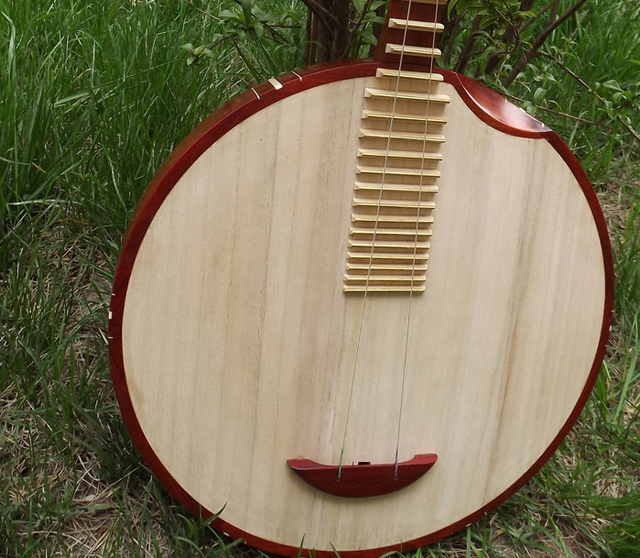What is the difference between Yueqin and Ruan?
Yueqin originated from Ruan, and then gradually changed. In the Qing Dynasty, Yueqin was completely different from Ruan. Compared with Ruan, Yueqin was simplified and slightly smaller in size. Yueqin has a sharp and high-range sound, and is often used for solo, instrumental ensemble, or to accompany song and dance, opera, and rap music. Ruan has a low voice and a long body, and is often used as a solo, duet, singing and dancing accompaniment or playing in a national band.
1. Yueqin
1. Compared with Ruan, Yueqin is smaller in size and has a brighter sound. Yueqin has a sharp and high-range sound, and is often used for solo, instrumental ensemble, or to accompany song and dance, opera, and rap music.

2. The Yueqin originated from Ruan, a musical instrument that evolved from Ruan. It has been popular among the people since the Jin Dynasty. It has been called the Yueqin since the Tang Dynasty. It is round like a moon and sounds like a qin. Yueqin was similar to Ruan at the time, but gradually changed. In the Qing Dynasty, Yueqin was completely different from Ruan. It was simpler than Ruan. The stem became shorter and the speaker was full circle. At the same time, it began to spread widely among people of all ethnic groups. Now Taiwanese opera, song rap, Hokkien opera (Xiang Opera) and Gezi (locally known as Jin Ge, the general term for folk songs) all use Yueqin.
2. Nguyen
1. Compared with the Yueqin, the Ruan has a low voice and a long body. It is often used as a solo, duet, singing and dancing accompaniment or playing in a national band.
2. Ruan was called Qin Pipa in ancient times. It is a kind of musical instrument with round body, straight item, four strings and 12 frets created by the Han people. Hold upright and play with your hands. The varieties of Ruan are Xiao Ruan, Da Ruan, Middle Ruan and Low Ruan, including four parts of bass, tenor, alto and soprano, forming a series of musical instruments.
3. Among this family of musical instruments, Xiao Ruan is a high musical instrument with crisp and bright pronunciation, and often plays tunes in the band. Ruan's playing skills are relatively simple, and now with the reform of musical instruments, they have been gradually enriched.
4. Ruan often plays with a pick. Many music academies in China have successively opened Ruan's undergraduate majors, among which Da Ruan and Zhongruan's solo pieces have also begun to emerge one after another. Nguyen can be used for solo, ensemble, singing and dancing accompaniment or participating in national band performances, and has rich artistic expression.
 渝公网安备 50010702504639号
渝公网安备 50010702504639号